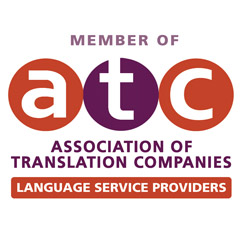Legal translation demands more than bilingual fluency. It involves responsibility, in-depth legal knowledge and meticulous attention to detail. Even a minor error could result in financial loss, legal consequences or reputational damage. Therefore, anyone dealing with contracts, court rulings, notarial deeds or corporate bylaws must ensure every word retains its full legal weight in translation.
As soon as a legal document gets translated, it may acquire legal value in another jurisdiction. Hence, every terminological choice must rest on sound legal reasoning, not merely linguistic logic. In legal translation, precision is not optional—it is mandatory.
Preventing Errors from the Start
To avoid costly mistakes in legal translation, one must first define the document’s purpose. Will it be submitted in court or serve as legal evidence? Will parties from different countries sign it? Each answer determines the translation’s tone, register and format.
In addition, identifying both the source and target legal systems proves essential. A contract governed by French civil law differs in structure and terminology from one rooted in British common law. Consequently, effective legal translation requires comparative legal knowledge, not just language skills.
Literal translation rarely works in legal contexts. Legal meanings depend on systems, not dictionaries. For instance, the term “consideration” in English contract law translates to “contraprestación” in Spanish, not “consideración”, due to its technical legal function.
Common Errors in Legal Translation
One of the most common issues lies in terminological misinterpretation. Even fluent bilinguals may fall into the trap of applying general logic to legal terms. This leads to misleading or legally flawed translations.
Another typical mistake involves terminological inconsistency. A key term must remain consistent throughout the document. For example, alternating between “tenant” and “lessee” without legal distinction can confuse the contractual obligations or create room for dispute.
Moreover, ignoring the formal structure of legal documents creates further risks. Each document type—judgement, will, notarial act—follows strict formatting rules. Disregarding these standards could result in document rejection by authorities or courts.
Additionally, overlooking linguistic nuance affects interpretation. Legal language often relies on specific moods, such as the subjunctive, or on procedural formulas. Subtle shifts in tense or syntax may alter the strength or meaning of a legal obligation.
Strategies for Accurate Legal Translation
Achieving high-quality legal translation starts with specialisation. A translator must go beyond general legal studies and delve into specific branches, such as corporate, procedural or criminal law, depending on the documents handled.
Relying on official legal glossaries, specialised dictionaries and current legislative databases ensures correct term selection. Such resources help maintain both legal precision and terminological consistency.
Consulting a legal expert from the target country also enhances accuracy, especially when documents will serve in official or contentious proceedings. Legal review confirms the translated document aligns with jurisdictional expectations.
Furthermore, keeping a translation memory for recurring clients helps preserve consistency across projects. It speeds up future work and guarantees the same legal phrasing appears across related contracts or filings.
Conclusion
In conclusion, legal translation requires far more than language skills. It demands legal literacy, attention to legal consequences and full commitment to clarity. A single mistranslation may invalidate a contract or lead to legal sanctions.
Choosing a professional with legal expertise ensures safety, compliance and peace of mind. Ultimately, legal translation isn’t just a service—it’s a safeguard. Investing in expert legal translation today may prevent lawsuits, disputes or losses tomorrow. Click here to request a quote at Max Translation.




